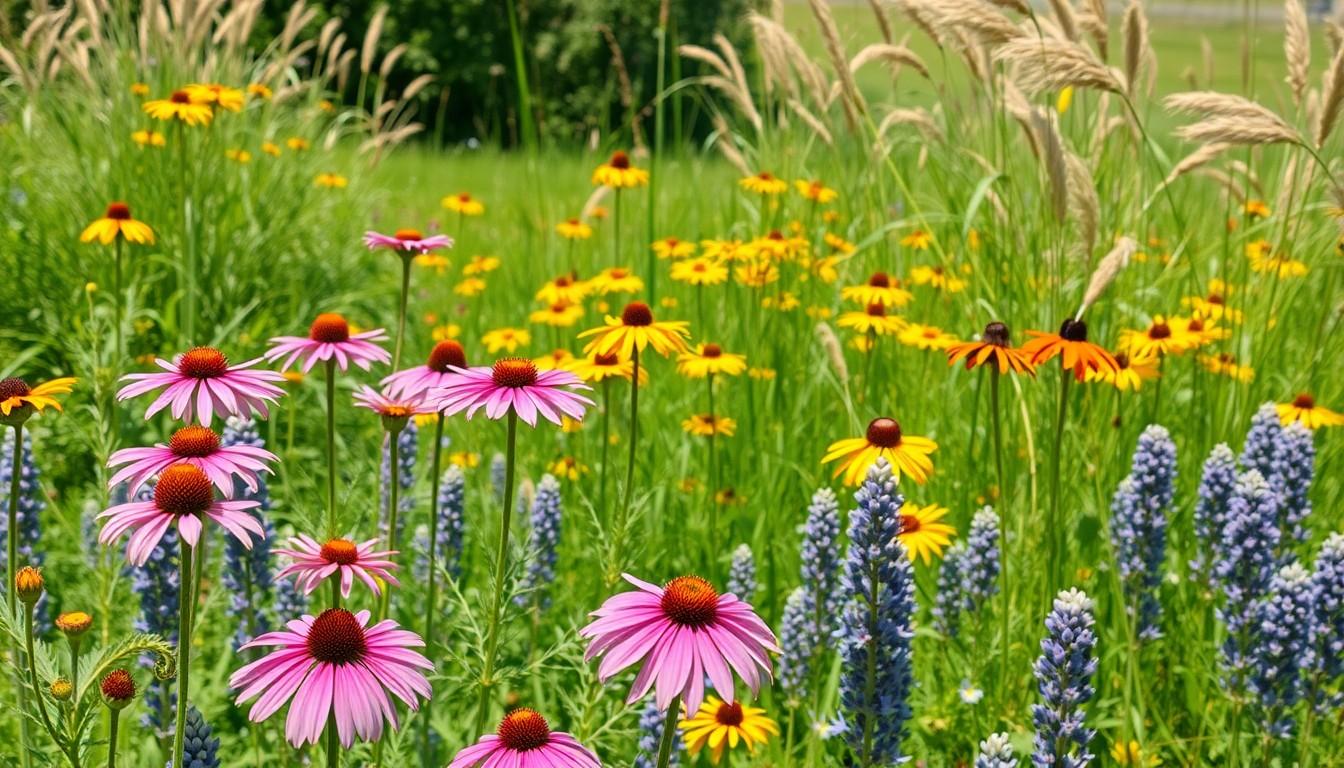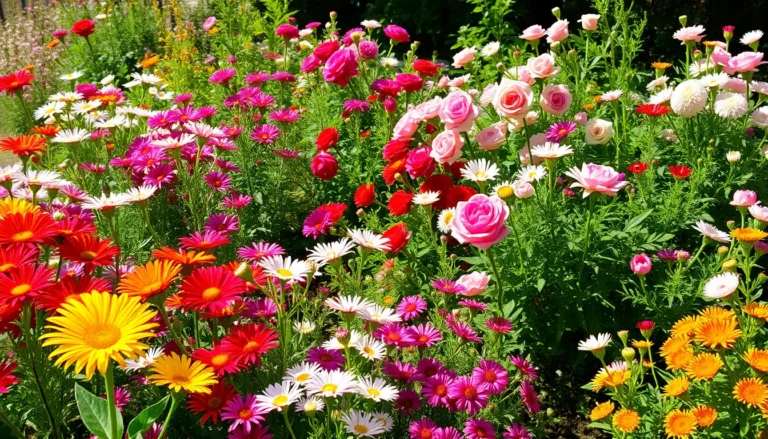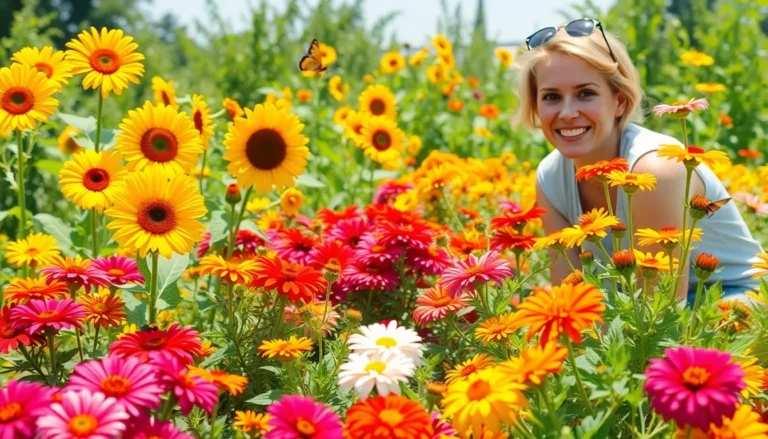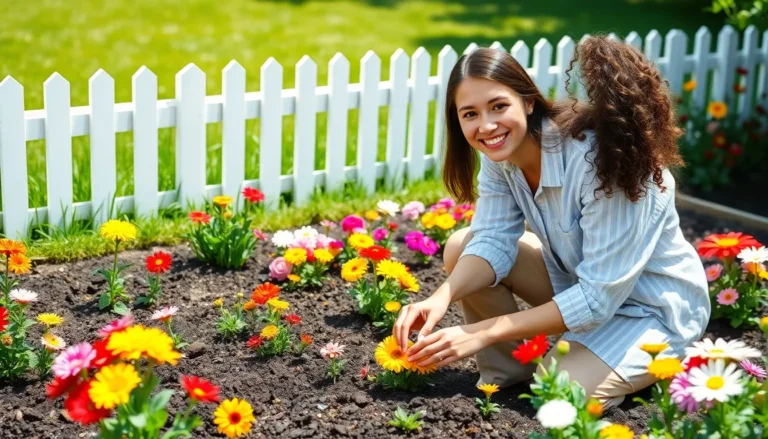Kansas isn’t just the land of sunflowers and Dorothy’s dreams; it’s a treasure trove of native plants that deserve a spotlight. These green wonders have adapted to the local climate, thriving with minimal fuss while adding beauty and biodiversity to the landscape. If you think native plants are just those pesky weeds in your neighbor’s yard, think again!
From the vibrant purple coneflower to the resilient little bluestem grass, these plants are like the unsung heroes of the ecosystem. They provide food and shelter for wildlife, require less water, and can even save you from the dreaded garden center meltdown. So why not embrace the charm of Kansas’ native flora? Dive in and discover how these plants can transform your garden into a local paradise while keeping your watering can at bay.
Overview of Native Kansas Plants
Native Kansas plants play a crucial role in maintaining the local ecosystem. These plants are well-suited to the region’s climate, offering resilience against drought and extreme temperatures. The diversity of flora includes species like the purple coneflower, which attracts pollinators, enhancing biodiversity. Little bluestem grass also thrives, providing essential habitat for wildlife.
Many native plants require minimal maintenance, making them ideal for gardeners looking to reduce water usage. They adapt easily to the soil conditions and local environment, contributing to sustainable gardening practices. A lawn or garden featuring these species often showcases vibrant colors and textures throughout the growing season.
Native plants support local insects, birds, and other wildlife by serving as food sources and shelter. Incorporating these species into landscaping helps restore natural habitats and encourages a balanced ecosystem. The incorporation of native plants also reduces the need for chemical fertilizers and pesticides, promoting a healthier environment.
Diverse options exist for gardeners interested in native plants, including wildflowers, grasses, and shrubs. For instance, the black-eyed Susan offers bright yellow blooms, while the fragrant aster introduces purple hues to gardens. By focusing on native flora, individuals can create ecological sanctuaries that flourish sustainably.
Importance of Native Plants
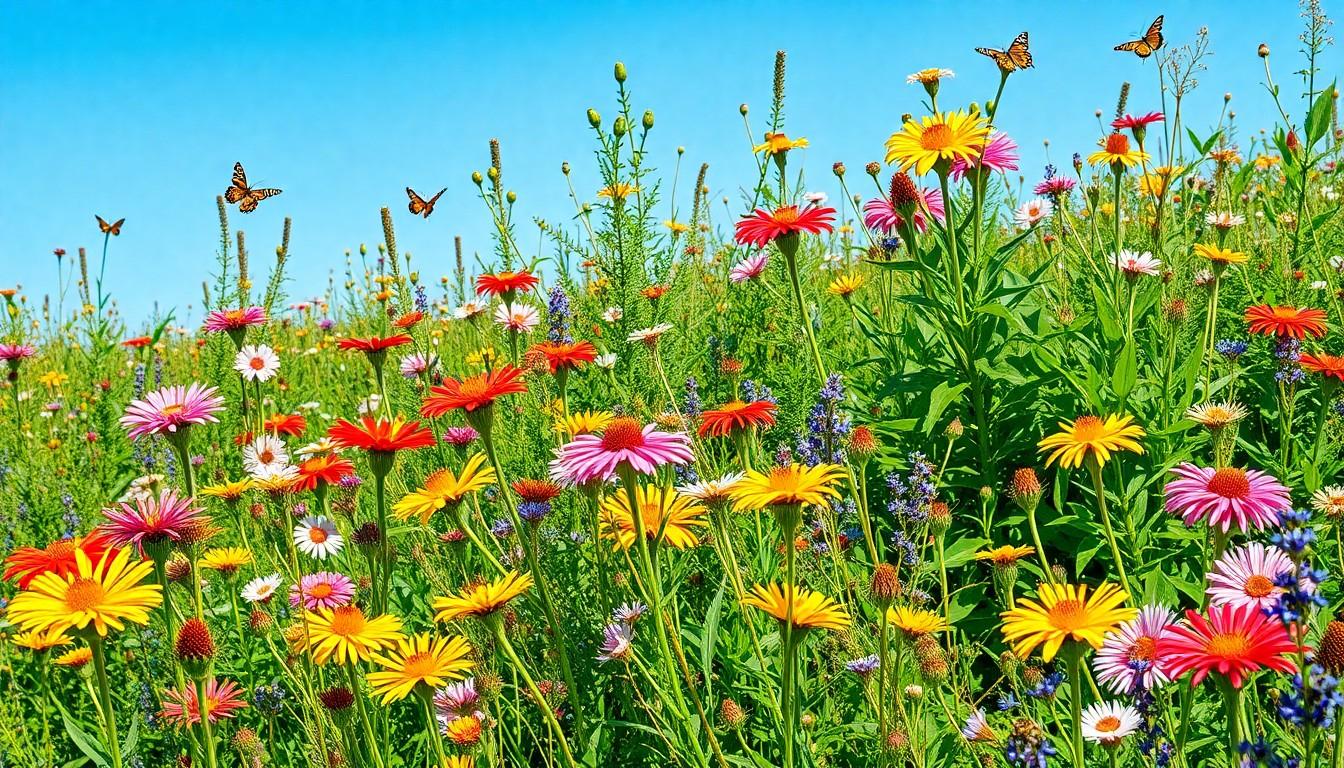
Native plants play a vital role in the ecosystem of Kansas, contributing to both environmental stability and cultural heritage.
Ecological Benefits
Ecological balance thrives with the presence of native plants. They preserve local biodiversity by providing habitats for insects, birds, and mammals. Pollination attracts a variety of native bees and butterflies, which boosts plant reproduction. Native vegetation also reduces soil erosion, thanks to deep roots that stabilize the soil. Rainwater absorption improves as these plants are adapted to capture moisture effectively, lessening stormwater runoff. In addition, many native species are drought-resistant, which supports resilience in extreme weather conditions. Adopting native plants fosters a sustainable environment, promotes ecosystem health, and reduces the need for chemical interventions.
Cultural Significance
Cultural aspects of native plants extend beyond mere aesthetics. Native species often hold historical significance, representing the heritage of indigenous peoples. Many traditional practices involve utilizing these plants for medicinal purposes, food, and crafts. Local communities celebrate natural beauty through art and festivals centered on these vital flora. Education about native plants fosters pride and awareness among residents, encouraging conservation efforts. Gardens featuring native species serve as living demonstrations of cultural identity and environmental stewardship. By embracing these plants, individuals preserve their cultural ties while enhancing the landscape of Kansas.
Common Native Kansas Plants
Native plants in Kansas contribute significantly to the ecosystem. Trees, shrubs, and wildflowers represent the diversity of Kansas’ flora.
Trees
Several tree species thrive in Kansas, showcasing remarkable adaptability. Eastern red cedar offers year-round greenery and serves as wildlife habitat. Bur oak boasts a majestic presence, providing shade and nourishment for various bird species. Black walnut produces edible nuts that attract wildlife while its wood is highly valued for furniture. Sycamore, with its unique bark and large leaves, supports a variety of birds and insects. These trees not only enhance landscapes but also play essential roles in maintaining ecological balance.
Shrubs
Shrubs add texture and depth to Kansas landscapes. Prairie sumac, known for its vibrant red foliage in autumn, enriches habitats with its berries. Serviceberry produces white blossoms in spring, leading to sweet edible fruit enjoyed by both humans and wildlife. Gray dogwood exhibits resilience, tolerating drought conditions while supporting pollinators, such as bees. Additionally, elderberry offers medicinal uses alongside its attractive flowers and berries. These shrubs create visual interest and foster biodiversity in natural and cultivated spaces.
Wildflowers
Kansas boasts an array of stunning wildflowers that paint the landscape. The purple coneflower stands out with its bright petals, attracting butterflies and beneficial insects. Black-eyed Susan adds cheerful yellow blooms, flourishing in open meadows. Butterfly milkweed provides essential nectar for monarchs, supporting their life cycle. Prairie clover, with its dense clusters of purple flowers, helps fix nitrogen in the soil, promoting fertility. Though diverse, these wildflowers thrive with minimal maintenance, encouraging gardeners to adopt native planting practices.
Gardening with Native Kansas Plants
Embracing native Kansas plants in gardening creates sustainable and aesthetically pleasing landscapes. These plants thrive in local conditions and support biodiversity.
Design Tips
Incorporate varying heights and colors to create visual interest. Use clusters of similar species to mimic natural habitats. Place native wildflowers like purple coneflower and black-eyed Susan alongside grasses such as little bluestem for texture. Design pathways that encourage exploration, allowing for easy access and appreciation. Consider the plants’ seasonal changes; the blooms and foliage ensure year-round appeal. Mixing trees like Bur oak with shrubs such as serviceberry enhances the garden’s structure. By planning thoughtfully, the garden reflects the local ecosystem’s beauty.
Maintenance Practices
Maintaining native plants requires minimal effort, making them ideal for busy gardeners. Mulching conserves moisture and suppresses weeds, reducing the need for chemical interventions. Regular monitoring for pests ensures the health of the plants while attracting beneficial insects that naturally control populations. Watering practices can be adjusted based on seasonal rainfall, allowing plants to flourish in drought conditions. Pruning after blooming promotes healthy growth and longevity. Utilizing compost improves soil structure, enhances nutrient availability, and fosters a thriving ecosystem. These practices support low-maintenance gardening while preserving the beauty of native flora.
Challenges in Preservation
Challenges in preserving native Kansas plants stem from various factors. Urbanization significantly impacts habitats, reducing the land available for these species. Invasive species often outcompete native flora, disrupting local ecosystems. Climate change has also introduced unpredictable weather patterns, affecting plant resilience and growth.
Habitat fragmentation creates isolated populations, leading to decreased genetic diversity. Limited genetic variation can reduce a species’ ability to adapt to changing conditions. Soil degradation further threatens native plants, as many require specific soil types for optimal growth. Pollinator decline presents another challenge, since many native plants depend on these species for reproduction.
Lack of public awareness about the importance of native plants complicates preservation efforts. Many people still associate native plants with weeds, which can hinder community support for conservation initiatives. A focus on non-native landscaping choices may detract from efforts to sustain local biodiversity. Restoration requires not only planting but also educating the community on the ecological benefits of native plants.
Funding limitations can restrict conservation projects aimed at preserving habitats. Local organizations and government agencies often seek financial support to restore ecosystems. Effective collaboration between stakeholders is essential for overcoming these challenges.
Community engagement plays a crucial role in preserving native habitats. Educational programs can foster appreciation for the local ecosystem, inspiring residents to take action. Local gardening initiatives can promote the use of native plants, enhancing the overall health of Kansas’ landscapes.
Conclusion
Embracing native Kansas plants not only enriches gardens but also contributes significantly to the local ecosystem. These plants support wildlife habitats and enhance biodiversity while requiring minimal maintenance. By choosing native species, individuals can create beautiful landscapes that thrive sustainably and withstand the challenges of climate change.
The cultural significance of these plants adds another layer of value, connecting residents to their heritage and fostering environmental stewardship. As awareness grows about the benefits of native flora, more people can participate in conservation efforts. Ultimately, integrating native plants into everyday gardening practices cultivates a deeper appreciation for the natural beauty and ecological importance of Kansas’ landscapes.

